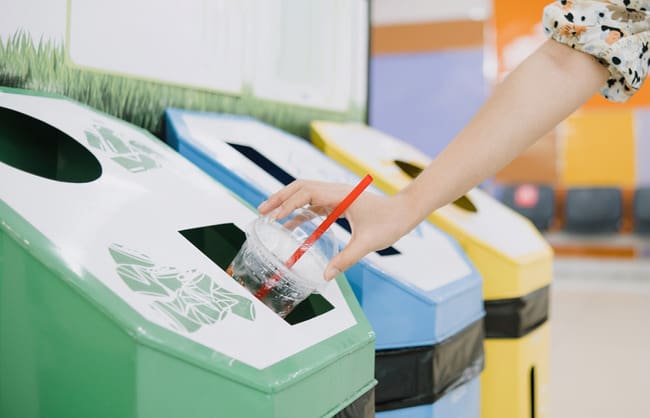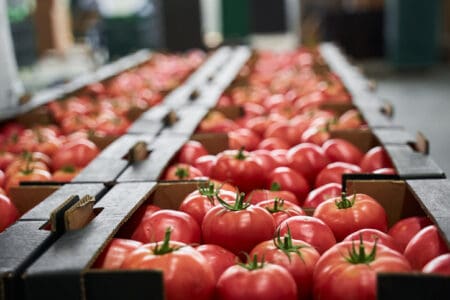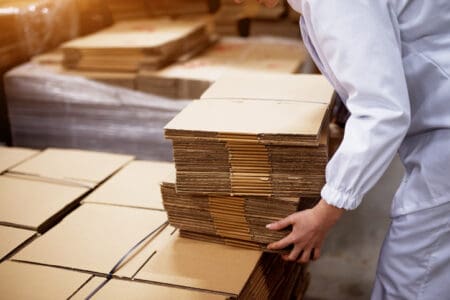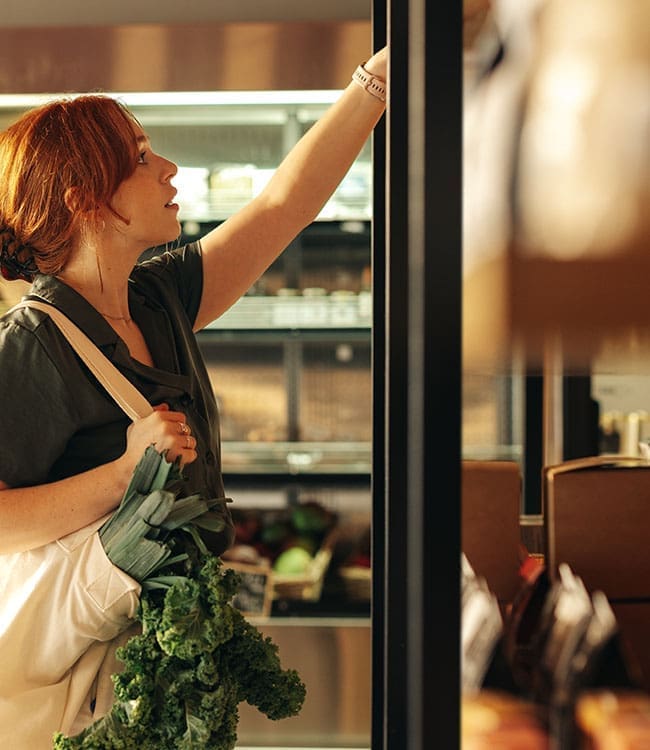As discretionary income in the UK decreases, consumers are often prioritising cost over packaging sustainability in their purchasing decisions. Despite this, over half of consumers still consider sustainability as an important factor for food packaging. Over 70% of consumers are concerned about product packaging ending up in landfills, which highlights an ongoing need for companies to address and find solutions to these environmental concerns.
The Sustainability of Packaging
‘Single-use plastic’ has become a damning word in recent years. You’ve probably seen images of island-sized heaps of plastic adrift in our oceans. But when it comes to something as small and seemingly innocuous as, for example, a plastic fork, it’s easy for people to become complacent. This is especially true given the UK’s confusing and often ineffective recycling process.
The common phrase ‘reduce, reuse, recycle’ is meant to be understood in chronological order, meaning before we reuse or recycle, we must attempt to reduce the amount of waste we create in the first place. Given the ubiquitousness of plastic, the prospect of removing it completely is unlikely. Plastic improves the shelf life of perishable items, provides effective protection and is lightweight. However, consumers expect that the responsibility should still lie with businesses to reduce plastic packaging as much as possible to reduce the amount consumers are purchasing and subsequently contributing to that ocean heap.
Historically, much of the burden for the climate crisis has been put on the everyday consumer – turn lights out, separate recycling, and do your bit. However, some of the ownership needs to be on companies to simplify the process to allow consumers to make sustainable choices. This can come in the form of demystifying the packaging lifecycle.
A good example of this is the pervasive myth that plastic is entirely recyclable when in fact the vast majority goes to landfills. Consequently, many consumers have reported confusion regarding the sustainability of packaging.

As a result, businesses must help customers help themselves. This means reducing the manufacture of packaging that is complicated or impossible to recycle. If this is not possible, there are plenty of ways to encourage more sustainable initiatives. Refillable packaging means consumers only need to buy the container once and then refill it. One brand that is leading the way in sustainable practices is Nivea and their Ecorefill hand soap starter kit that includes a pump bottle and 1 refill tab, which can be added to lukewarm water to create soap. Once the soap is finished, the customer can buy more refill tabs, thus ending the need to purchase more plastic. Businesses need to understand consumers’ needs and frustrations to offer sustainable products and packaging to help encourage them to do their part.
Technological Advancements of Packaging
AI is revolutionising packaging by providing valuable insights into consumer preferences. It can analyse vast datasets and generate ideas that lead to unique, user-centric designs and overall efficiency improvements. For example, AI will be able to identify any packaging elements that fall short of quality standards, such as misprints and damages. Additionally, AI can predict demand fluctuations, helping to reduce waste and keep the right level of inventory at all times.
From a design perspective, AI looks at historical wins from advertising campaigns and packaging changes and decides what works for your target audience. It can also provide insights on how to meet the sustainability goals of your packaging. And if you want to push AI to its full potential, the technology can be used to create bespoke designs, featuring personalised messaging or location-specific information.
Businesses can also generate more interesting packaging using augmented reality. Winemakers, 19 crimes, use AR to create living labels. When a customer points their phone camera at one of their bottles, the person on the label will come to life and tell them a story. Dynamic and interactive ideas like this will make brands stand out.
Looking Ahead with Mintel
There is no clear-cut, one-size-fits-all answer for which packaging is the most environmentally friendly. Individual brands must invest resources in identifying the most suitable materials for their products and clientele. A lack of transparency drives a wedge between consumers and companies, hindering efforts to work together to create a better tomorrow.
With a blend of new technology and sustainability, product packaging has the potential to interest and delight customers. While sustainable packaging can sometimes be less aesthetically appealing due to the use of recycled materials, businesses should embrace these imperfections and move away from uniformity in their packaging designs.
Take advantage of our in-depth market research to sharpen your strategies and align with the latest trends in consumer behaviour. Explore our extensive Packaging Market Research today.
Subscribe to our newsletter, Spotlight, to get free insights delivered directly to your inbox.






































